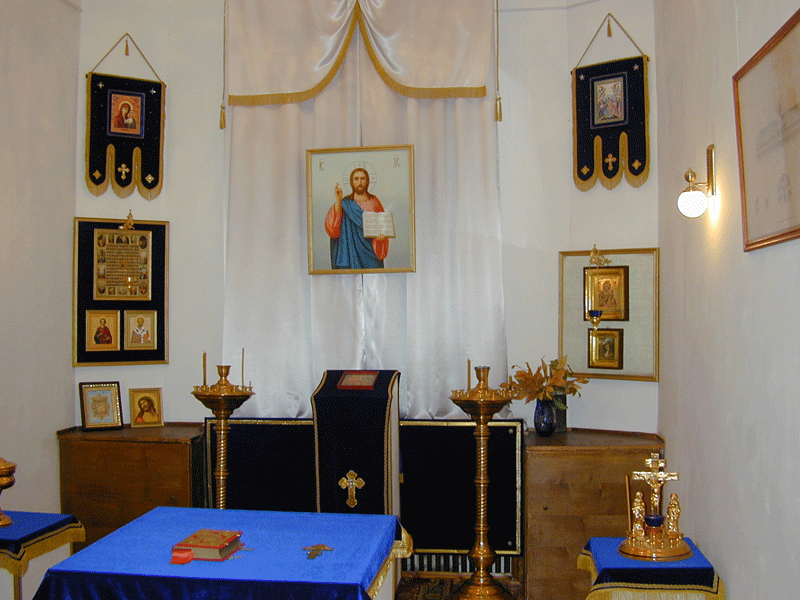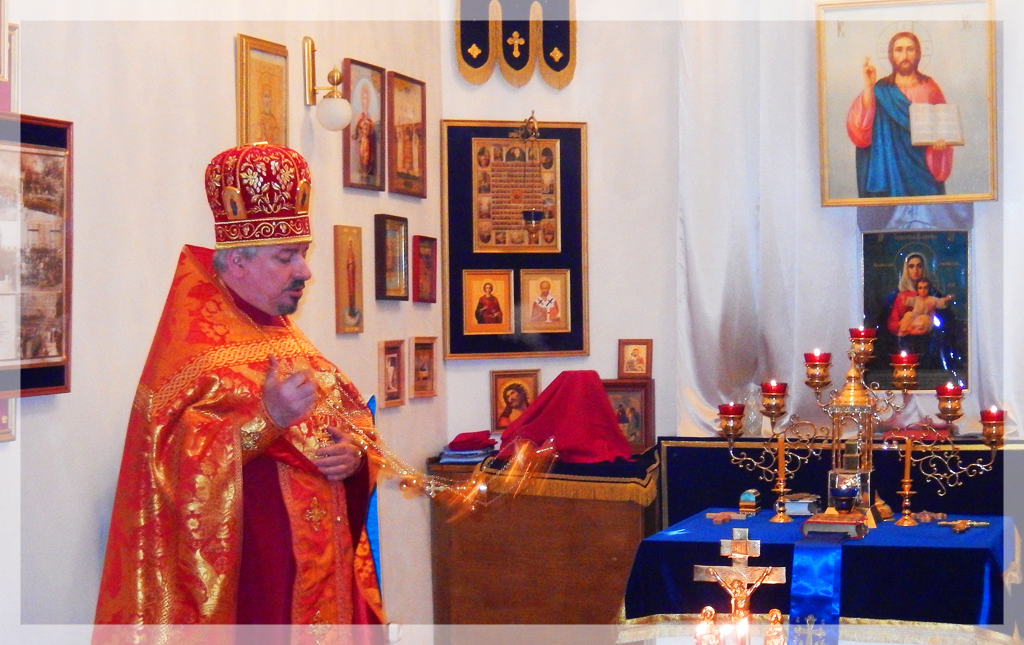The artistic color scheme of the composition of the hall reveals the principle of dual unity of the Union of servants of the faith and the army: cornflower-blue velvet decoration – the color of the Holy Mother and the uniforms of the guards of the Semyonovsky regiment; white – the purity of the Orthodox faith and the decoration of the regimental hospital wards.
In this exhibition, the stand located on the left presents: commemorative badges of the life guards of the Semyonovsky and Preobrazhensky regiments, a lithograph by J. Jacotte based on a drawing by I. Charlemagne "Vvedenskaya Church", as well as photographic materials about the history of the Semyonovsky regiment. There are also portraits of famous personalities of the Russian state who served in the Semyonovsky life guard regiment:
– field Marshal General and Prince M. M. Golitsin,
– field Marshal General and Earl S. F. Apraksin,
– Generalissimo, Prince and Italy Earl A.V. Suvorov,
– General-feldzeichmeister and Prince G. G. Orlov,
– Admiral and Earl A. G. Orlov-Chesmensky.
The Semyonovsky life guard regiment was founded in 1695 by Peter I. Initially, the Poteshny regiment was stationed on the banks of the Yauza river near Moscow in the villages of Preobrazhenskoye and Semyonovsky. In the future, the regiments were named after these villages.
From 1801, on the day of Alexander I's accession to the throne, the regiment became known as the Semyonovsky life guard regiment.
Under the protection of Holy icons and banners, the Semyonovsky regiment took part in many battles and military campaigns of the Russian state. Initially, the banners were white, and since 1731 – red. On the banners was the inscription: "For the name of Jesus Christ and Christianity, this banner won."
In 1799, each battalion had 5 banners: one white, the other red with white crosses and the image of a double-headed eagle.
Since its formation, the Semyonovsky regiment had a uniform modeled after the German troops of that time, which was subsequently changed several times. In 1762, the commander of the regiment was a Colonel-Her Imperial Majesty Catherine II. The Orthodox faith of the peoples of Russia was one of the foundations of the fearlessness of Russian soldiers and their victories.
The traditions laid down by the regiment's founder, Peter I, were sacredly maintained and preserved for centuries. In 1918, the «semyonovtsy», loyal to the oath that was given at the regimental banner, when the regiment was disbanded during the Civil war, secretly took this banner and hid it in the secret of the regimental Church of the Introduction to the Church of the Holy Mother.
In 1930, the cache with the regimental banner was discovered. Former «semyonovtsy» (21 people) were arrested and convicted, and the Church, as a stronghold of the autocracy, was blown up in 1933.
On the right side of the exhibition there is a stand that reflects the history of the Semyonovsky-Alexander military hospital, giving a complete picture of a long-gone time.
In the center of this stand there are unique documents from 1890: permission to enter into the first legal marriage of an officer of the guards regiment, a birth certificate, as well as a residence permit, etc.
The chapel's exposition is crowned by the image of Christ the Savior delivering the sermon Sermon on the Mount.
The reflections of the flag stones, gilded Church utensils, candles and lamps of the chapel create a special emotional and psychological mood for visitors.



